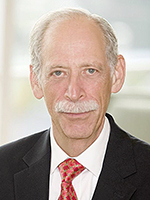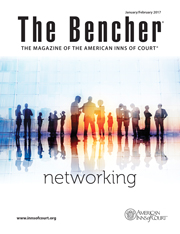The Evolution of eFiling and the Rules of Professional Conduct
The Bencher—January/February 2017
By Richard K. Herrmann, Esquire

 It is difficult to imagine that electronic filing has been evolving for more than 25 years. It is equally difficult to imagine that the same issues which plagued us in 1991 continue to haunt us. There is a major difference; now we have a new technology focus on competency and confidentiality under Rules 1.1 and 1.6. The learning curve should now be complete and those who engage in electronic filing should finally be getting it right. A brief refresher is definitely appropriate.
It is difficult to imagine that electronic filing has been evolving for more than 25 years. It is equally difficult to imagine that the same issues which plagued us in 1991 continue to haunt us. There is a major difference; now we have a new technology focus on competency and confidentiality under Rules 1.1 and 1.6. The learning curve should now be complete and those who engage in electronic filing should finally be getting it right. A brief refresher is definitely appropriate.
The History
Electronic filing was first introduced in 1991 in Delaware to manage the immense dockets created by the insurance coverage cases filed by many of the fortune one hundred companies, seeking coverage for the cost of environment reclamation. Instead of a typical 25 record docket in a civil case, the records in the insurance coverage disputes could exceed 10,000. In those days docket entries were recorded manually. Electronic filing was the solution introduced by the Delaware Courts.
Major Challenges
While most lawyers do not actually file the documents themselves, we are responsible for supervising our staff and we own their errors under Rule 5.3. As a supervisor, it is important to create a checklist or practice to avoid mistakes:
Upload the correct file
There are two common problems which might keep you up at night. Was the correct document filed? In other words, did you file the wrong answer and counterclaim? Since most law firms use document management systems, the naming convention is usually a number rather than a description. Numbers can be easily transposed or inverted. It would also be wise to file the final version rather than an older draft. Develop a failsafe practice to avoid these errors. Otherwise you have both a Rule 1.1 and a Rule 1.6 issue.
Be sure redactions are redacted
Many of us are in litigations requiring the filing of documents under seal as well as redacted public versions. Staff training on the proper use of redaction tools is critical. Unless the redactions are created properly, they can either be reversed or the redacted text can be copied and pasted into another document. Yet another Rule 1.1 and 1.6 issue, as well as a possible violation of a protective order.
Make sure Track Changes have been accepted
Microsoft Word has an incredibly useful tool called Track Changes. This permits the user to review changes in the document during its various iterations. It is not uncommon for a document to be filed without accepting all of the changes so that earlier drafts cannot be reviewed.
Protect your eFiling Password
This has become an increasing problem as national law firms continue to grow their many locations, and as practice groups work in virtual teams. You may find a young associate in the forum office on the east coast working with a partner in California. It is 11:45 pm in Delaware and the early evening lights have just been turned on in San Francisco. The partner in the San Francisco office tells the associate in Delaware to call it a night and leave the last draft and filing to those in California. All it requires is giving the partner the associate’s eFiling password. A very difficult position for the associate. Courts look to the signer for any errors, or missteps in civility or professionalism. In fact, in Delaware, by way of example, use of a password is no different than a signature under Rule 11. To the partners of this world, please don’t put your young lawyers in this awkward position. To the associates, anticipate the issue, seek guidance in advance from a mentor, and devise a comfortable way to “just say no”.
Quality of life
In 1991, the clerk’s office closed at 4:30 p.m. There was a drop box for emergency filings, but generally the document was considered as filed the next day. eFiling has permitted us to expand our workday to midnight. The clerk still goes home at 4:30 p.m., but the virtual lights remain on until 12:00 a.m. As a result courts have realized that both the quality of life and the quality of the final draft have suffered. There is now a trend to turn off the virtual lights at a more reasonable hour such as 6:00 p.m. The quality of the final product will improve as will the quality of life.
Richard K. Herrmann, Esquire is a partner in the firm of Morris James in Wilmington, Delaware. He is a Master in the Richard K. Herrmann Technology AIC.
© 2017 Richard K. Herrmann, Esq. This article was originally published in the January/February 2017 issue of The Bencher, a bi-monthly publication of the American Inns of Court. This article, in full or in part, may not be copied, reprinted, distributed, or stored electronically in any form without the express written consent of the American Inns of Court.